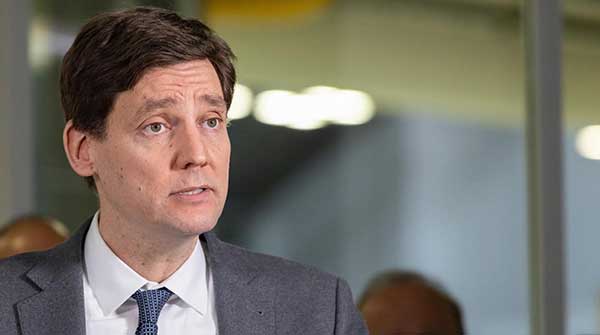The BC NDP government is attempting to impose its own vision for reconciliation and make it irreversible before anyone notices
By Geoffrey Moyse
Majority governments believe they can do exactly as they please. No need to engage the public on radical changes in policy, particularly those that were never in prior election mandates. After all, it seems governments must only account to the public at election time.
So, late in its mandate, the BC NDP provincial government has invented a new “template” for Indigenous reconciliation in British Columbia – one that assumes a provincial government can just unilaterally recognize the existence of Aboriginal title wherever it is claimed to exist.
The result – the “100 percent Aboriginal title” arrangement that is now allegedly in effect on Haida Gwaii – at least until it is successfully legally challenged.
Unfortunately, the NDP’s template ignores the balancing of Indigenous and non-Indigenous interests central to Canadian Aboriginal law and modern treaty-making.
But virtue-signalling is much more important than protecting the overall public interest, isn’t it? Just deflect public concern by stating the claims to be “very strong” and do not draw attention to the fact that the template is likely to be entirely unconstitutional.
Such an easy answer to what everyone knows is a complex legal and relationship challenge, all without the need for litigation or onerous treaty negotiations. The template also assumes there is no need for annoying engagement with the public or private landowners.
Another bonus is that the new template avoids the difficult task of involving the federal government, notwithstanding that it happens to hold exclusive legislative jurisdiction over “Indians and lands reserved for the Indians” under the 1867 Constitution Act.
No need for difficult tripartite treaty negotiations that seek to balance Indigenous and non-Indigenous interests. No need to go before the courts to determine where such title might actually exist in law.
According to the United Nations Declaration on the Rights of Indigenous Peoples (UNDRIP) – a non-binding UN declaration that is not the law in Canada but which this government has embraced – Indigenous title apparently exists wherever there is a claimed territory (e.g. over the entire provincial land base). Canadian law happens to say otherwise.
A majority government can just unilaterally declare Aboriginal title, legislate it, and promise never to infringe it, and all that “balancing of rights” between First Nations and all other British Columbians can be conveniently ignored.
Of course, in the case of all those relinquished Crown lands, there is no more need for government administration or decision-making on behalf of all citizens of BC in the public interest. All provincial public land disappears the moment Aboriginal title is declared, as has now allegedly happened on Haida Gwaii.
Why do we need all those public lands anyway? It’s not like they are at all important to the British Columbia public or its economy, are they?
Don’t worry about how this government will apply this template to the rest of British Columbia or how much Crown land they will decide to transfer. The matter is safely in the hands of politicians, bureaucrats, and their unelected advisors.
Now the government can simply apply the “Haida template” and proceed with unilaterally “recognizing” Aboriginal title wherever it is claimed, potentially over the entirety of traditional territories in BC. No complicated legal analysis is required. Why bother with the law or public engagement?
It may be inconvenient that these claims cover more than 100 percent of the province, but isn’t that a small price to pay for true reconciliation?
Who really needs the Canadian Constitution and all its complicated legal foundations anyway? We now have an approach to reconciliation that conveniently ignores the public, the public interest, and the law.
Just get ready to say goodbye to huge tracts of public Crown land and say hello to equally huge tracts of Indigenous-owned and controlled Aboriginal title land, all presumably without your input.
As to private land, never fear; the bureaucrats and advisors will look after your interests. Trust them to invent something untried … like on Haida Gwaii.
Reconciliation by UNDRIP requires no public consultation, balance, or engagement with an irrelevant Canadian government. The NDP government can simply impose its new vision for reconciliation and attempt to make it irreversible before anyone really notices.
Geoffrey S. Moyse KC is a retired senior lawyer who served as legal counsel to the Province of BC, advising six successive governments on Aboriginal law over more than 30 years.
For interview requests, click here.
The opinions expressed by our columnists and contributors are theirs alone and do not inherently or expressly reflect the views of our publication.
© Troy Media
Troy Media is an editorial content provider to media outlets and its own hosted community news outlets across Canada.


